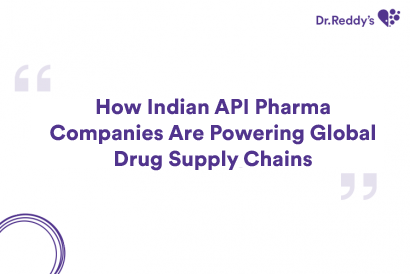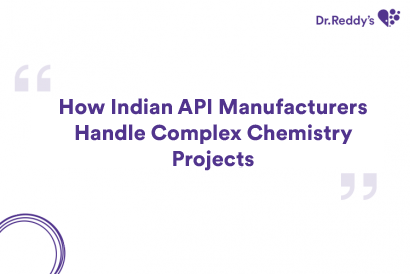End-to-End Overview of Pharma API Manufacturing
In the pharmaceutical industry, the term API pharma refers to the Active Pharmaceutical Ingredient—the biologically active component in a drug product. The process of API manufacturing is a complex, highly regulated, and critical part of drug development. This article provides a comprehensive overview of the end-to-end journey of API manufacturing, from raw material sourcing to final quality control.
What is an API in Pharma?
An API is the substance in a pharmaceutical drug that produces the intended effects. For example, in a pain relief tablet, the API is the compound that alleviates pain. Other components in the drug, known as excipients, help deliver the API effectively but do not have therapeutic effects themselves.
Stages of API Manufacturing
Raw Material Procurement
The first step in API manufacturing involves sourcing high-quality raw materials. These materials can be chemical compounds, biological substances, or plant-based extracts. The quality and consistency of these inputs are crucial, as they directly impact the efficacy and safety of the final product.
Chemical Synthesis or Fermentation
Depending on the nature of the API, manufacturers use either chemical synthesis or biotechnological methods like fermentation. Chemical synthesis involves multiple reaction steps to build the desired molecule, while fermentation uses microorganisms to produce complex biological APIs.
Purification and Isolation
After synthesis, the API must be purified to remove impurities and by-products. Techniques such as crystallization, filtration, and chromatography are commonly used. This step ensures that the API meets stringent purity standards set by regulatory authorities.
Drying and Milling
Once purified, the API is dried and milled into a fine powder. This step is essential for achieving the correct particle size, which affects the drug’s solubility and bioavailability.
Quality Control and Testing
Quality control is a cornerstone of API pharma manufacturing. Each batch undergoes rigorous testing for identity, potency, purity, and stability. Analytical methods like HPLC (High-Performance Liquid Chromatography) and mass spectrometry are employed to ensure compliance with pharmacopeial standards.
Analytical Testing
Analytical testing is the backbone of QC in API pharma. It involves:
- Identity Testing: Confirms the chemical structure of the API using techniques like Nuclear Magnetic Resonance (NMR) and Infrared Spectroscopy (IR).
- Purity Analysis: Determines the level of impurities using High-Performance Liquid Chromatography (HPLC), Gas Chromatography (GC), and Mass Spectrometry (MS).
- Potency Testing: Measures the concentration of the API to ensure it matches the labelled strength.
- Residual Solvent Testing: Ensures solvents used during synthesis are within acceptable limits.
Microbiological Testing
For APIs that are biologically derived or used in sterile formulations, microbiological testing is essential. This includes:
- Bioburden Testing: Assesses the microbial load in the API.
- Endotoxin Testing: Detects pyrogens that can cause fever if injected.
- Sterility Testing: Ensures the absence of viable microorganisms in sterile APIs.
Stability Studies
Stability testing evaluates how the API behaves under various environmental conditions over time. These studies help determine:
- Shelf Life
- Storage Conditions
- Packaging Requirements
- Accelerated and long-term stability studies are conducted as per ICH guidelines to simulate real-world scenarios.
Physical Property Testing
Physical characteristics like particle size, polymorphism, and hygroscopicity can affect the API’s performance. Techniques such as X-ray Powder Diffraction (XRPD) and Differential Scanning Calorimetry (DSC) are used to analyze these properties.
Documentation and Traceability
Every QC test is meticulously documented to ensure traceability and compliance. Batch records, Certificates of Analysis (CoA), and audit trails are maintained to satisfy regulatory inspections and customer audits.
Regulatory Compliance Audits
QC teams also prepare for periodic audits by regulatory bodies such as the FDA, EMA, and CDSCO. These audits assess the robustness of the QC systems, data integrity, and adherence to Good Manufacturing Practices (GMP).
Regulatory Compliance in API Manufacturing
API manufacturers must adhere to Good Manufacturing Practices (GMP) and comply with regulations from bodies like the FDA (U.S.), EMA (Europe), and CDSCO (India). These regulations cover everything from facility hygiene to documentation and traceability.
Challenges in API Pharma Manufacturing
Supply Chain Disruptions: Global events can impact the availability of raw materials.
Environmental Regulations: Chemical synthesis often involves hazardous substances, requiring strict environmental controls.
Cost Pressures: Balancing quality with cost-efficiency is a constant challenge.
Future Trends in API Manufacturing
The industry is witnessing a shift toward green chemistry, continuous manufacturing, and AI-driven process optimization. These innovations aim to make API pharma production more sustainable, efficient, and responsive to market needs.
Conclusion
The journey of API manufacturing is intricate and vital to the pharmaceutical supply chain. From raw material sourcing to final quality checks, each step is governed by precision, regulation, and innovation. As the demand for high-quality medicines grows, the role of robust API manufacturing processes becomes increasingly important.
- Call us:
 +91 40 49002253
+91 40 49002253
Contact Us
Rellene el siguiente formulario y nos pondremos en contacto con usted a la brevedad.




